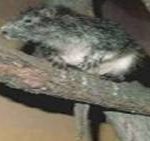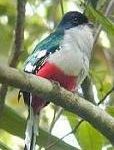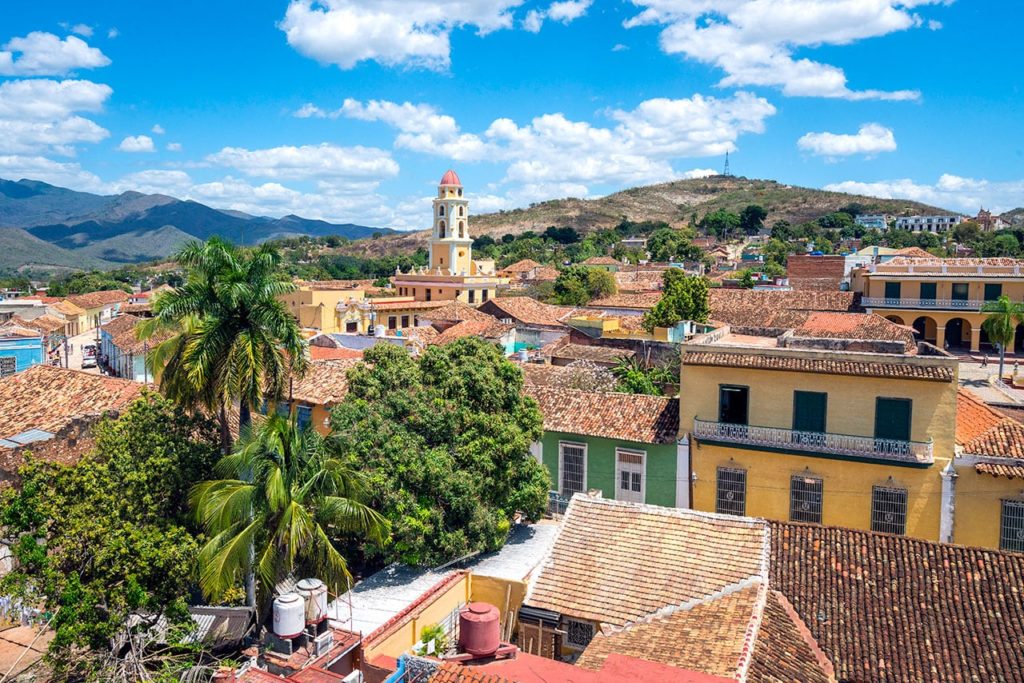LA FAUNA CUBANA, ESPECIES QUE ESTAN EN GRAVE PELIGRO DE EXTINCIÓN. PHOTOS.
Es la más pequeña de las aves del mundo, su nombre científico (Mellisuga elenae), onomatopeya derivada del zumbido de sus alas (zun-zun). Alcanza los 6 cm. de longitud y pesa hasta 2 gramos. Es endémico de Cuba.Tiene el dorso de color negro y roja la parte superior de la cabeza, sus alas están coloreadas de un verde azuloso, la cola azul metálico y el pico azul marino. Tiene la característica de no andar en pareja. Las hembras ponen dos huevos blancos en pequeñísimos nidos, que cuidan celosamente.
La jutía conga es de color pardo, mide unos 20 centímetros, pesa entre 200 y 420 gramos y se alimenta de mangle y de crustáceos, es una enorme rata que habita en las ramas de losarboles, son animales vegetarianos, se alimenta de hojas, cortezas de los árboles, frutas y raíces, casi no necesitan tomar agua.Las jutías gestan entre 3 y 4 meses, y pueden parir más de una vez en 12 meses. Como promedio tienen dos crías, suelen abandonar a los hijos al nacimiento de otros.
Su nombre científico Solenodon cubanus es un animal a punto de extinción. Su cuerpo posee una longitud de 28 a 32 cm y la cola mide de 17 a 27 cm. De costumbres nocturnas, anda en zigzag; su saliva es venenosa. Posee el segundo incisivo de cada lado de su mandíbula inferior, tiene una ranura comunicada con una glándula venenosa, de donde proviene, diente surcado o acanalado.
Su nombre cinetífico es Phoenicopterus ruber, es considerada dentro de la familia de las cigüeñas (Ciconiiformes). Sus proteínas (albúminas) se parecen a las de las garzas (familia Ardeidae).El flamenco es de plumaje rosa claro con las patas y la parte final de las alas de color rosado más intenso, con el pico encurvado y con la punta negra.El característico color rosa no aparece hasta pasado los 6 años de vida. El macho es más grande que las hembras. Vive en aguas salobres, su peso oscila entre 2000 y 4000 gramos, longitud 149 cm, longevidad 15 años y hasta 50 años en cautividad. Especie acuaria y gregaria.Los flamencos ya llevan existiendo desde hace mucho tiempo. Los fósiles encontrados indican que por lo menos desde el Mioceno (hace aproximadamente 10 millones de años).
Su nombre científico Crocodylus rhombifer, uno de los cocodrilos más pequeños, es una especie casi extinta del todo. Los pocos ejemplares de este animal, que ha sido asesinado en forma masiva a causa de su carne y su piel viven en su mayor parte en cautiverio. Se encuentra actualmente en el sureste de Cuba, en la Ciénaga de Zapata, la Isla de Pinos y la colonia de Gatorland, en FloridaEspecie de origen prehistórico, habita el planeta desde hace más de 70 millones de años, época en que aún existían los dinosaurios. El cubano es uno de los cocodrilos más pequeños, cuyo largo es como máximo de tres metros. Se alimenta de peces,aves y pequeños mamíferos.
La iguana recibe también el nombre de teyú, pertenece al grupo mayor y de más complicado diseño de los saurios del Nuevo Mundo,. Y a la familia de los Iguanidos. Pueden medir de 7.5 centímetros hasta 2 metros., presentan patas cortas y cinco dedos en cada pies que acana en garras afiladas, la cola es larga y delgada, rodeada de escamas dorsales. Prsenta escama, un abánico en la garganta y una orla dorsal usados por los machos para marcar territorios.
Su nombre científico Trichechu manatus. Habita de preferencia la desembocadura de los ríos. Su cuerpo, en forma de torpedo, está preparado especialmente para atravesar con facilidad las aguas, en las que pasa su vida entera. Su cabeza, cuello, tronco y cola se unen formando un solo cuerpo, cilíndrico y fusiforme. Se identifica por su cola aplanada y en forma de cuchara y por sus dos aletas con tres o cuatro uñas. Es de color gris, en ocasiones con lunares blancos en el vientre. La piel, desnuda y rugosa, está cubierta de pelos cortos y muy esparcidos, sin formar un verdadero pelaje, su boca tiene el labio superior hendido, sus partes laterales son tan móviles que obran a manera de tijeras presenta cerdas rígidas y cortas cubren los labios y actúan como verdaderos órganos táctiles. Su dentadura presenta solo algunas muelas atrofiadas y en lugar de dientes, placas córneas No presenta orejas. Es un animal tímido e inofensivo. Es el único mamífero marino completamente herbívoro.
Su nombre científico Priotetus temnurus, es una ave endémica de Cuba, considerara nuestra ave nacional, es es un ave trepadora, de bellos y vistosos colores. Su plumaje reproduce los colores de la enseña nacional. De nombre indígena: Guatiní, el tocororo habita en los lugares boscosos de todo el país, especialmente en las zonas montañosas. Es el ave nacional de los cubanos por dos razones fundamentales: por el simbolismo de su hermoso plumaje de vivos colores y por su resistencia al cautiverio, Su longitud es de 27 – 28,5 cm, y la el tamaño de sus alas sus alas de 39 – 39,5 cm. La cola mide 14,3 – 14,8 cm. La parte superior de la cabeza y la nuca son azul-violáceas, la espalda y la rabadilla son de color verde oscuro iridiscente, la garganta y el pecho son blanco-grisáceos, el vientre es rojo al igual que la base de la cola ,la cola tiene plumas largas y los ojos son rojos. El pico es oscuro arriba y rojo abajo.
RESUMEN DE LOS PELIGROS DE NUESTRA FLORA Y FAUNA.
La Flora y la fauna en términos generales, representan los componentes vivos de la naturaleza, los cuales unidos a los componentes no vivos como el suelo, el agua y el aire integran el medio natural y son recursos naturales renovables de notable importancia e interés. A esto añadimos que por la naturaleza insular de la isla de Cuba, existe aquí gran endemismo botánico y zoológico.
Aunque Cuba estuvo en el pasado casi cubierta por bosques, hacia fines de los años cincuenta sólo el 14% era terreno boscoso. Como resultado de los esfuerzos de reforestación, esta cifra ha crecido hasta el 21,4% (2000). Las campañas de reforestación continúan. La deforestación y la agricultura contribuyen a la erosión del suelo, que es otro desafío medioambiental en Cuba. La agricultura es vital para la economía de Cuba: los productos alimenticios constituyen el 59,1% de las exportaciones totales del país. Más del 40,7% de la superficie del país se dedica a tierra cultivable y cultivos permanentes.
No obstante, la contaminación costera y la excesiva caza plantean serias amenazas a la fauna salvaje. Cuba es miembro de acuerdos internacionales relativos a biodiversidad, cambio climático, especies en peligro de extinción, residuos peligrosos, vertidos marinos y contaminación naval.
Además existen leyes sobre la protección del Medio Ambiente y Uso Racional de los Recursos Naturales.
CUBAN FAUNA, SPECIES THAT ARE IN SERIOUS DANGER OF EXTINCTION. PHOTOS.
ZUNZUN
It is the smallest of the birds in the world, its scientific name (Mellisuga elenae), onomatopoeia derived from the buzz of its wings (zun-zun). It reaches 6 cm. in length and weighs up to 2 grams. It is endemic to Cuba. It has a black back and a red upper part of its head, its wings are colored bluish green, its tail is metallic blue and its beak is navy blue. It has the characteristic of not walking in pairs. The females lay two white eggs in tiny nests, which they guard jealously.
JUTIA CONGA
The hutia conga is brown in color, measures about 20 centimeters, weighs between 200 and 420 grams, and feeds on mangroves and crustaceans, it is a huge rat that lives in the branches of trees, they are vegetarian animals, that feed on leaves, the bark of the trees, fruits, and roots, they hardly need to drink water. Hutías gestate between 3 and 4 months and can give birth more than once in 12 months. On average they have two offspring, they usually abandon the children at the birth of others.
ALMIQUI
Its scientific name Solenodon cubanus is an animal on the verge of extinction. Its body has a length of 28 to 32 cm and the tail measures 17 to 27 cm. Of nocturnal habits, he walks in a zigzag; their saliva is poisonous. It has a second incisor on each side of its lower jaw, it has a groove connected to a poisonous gland, where it comes from and a furrowed or grooved tooth.
PINK FLAMINGO
Its scientific name is Phoenicopterus rubber, and it is considered within the family of storks (Ciconiiformes). Its proteins (albumins) are similar to those of herons (family Ardeidae). The flamingo has light pink plumage with the legs and the final part of the wings of a more intense pink color, with a curved beak and a black tip. The characteristic pink color does not appear until after 6 years of life. The male is larger than the female. It lives in brackish waters, its weight ranges between 2000 and 4000 grams, length 149 cm, and longevity of 15 years and up to 50 years in captivity. Aquarian and gregarious species. Flamingos have been around for a long time. The fossils found indicate that at least from the Miocene (approximately 10 million years ago).
CUBAN CROCODILE
Its scientific name is Crocodylus rhombifer, one of the smallest crocodiles, is an almost extinct species. The few specimens of this animal, which has been massively killed for its meat and skin, mostly live in captivity. It is currently found in the southeast of Cuba, in the Zapata Swamp, the Isle of Pines, and the Gatorland colony, in Florida. A prehistoric species, it has inhabited the planet for more than 70 million years, a time when dinosaurs still existed. The Cuban is one of the smallest crocodiles, whose length is a maximum of three meters. It feeds on fish, birds, and small mammals.
IGUANA
The iguana also receives the name teyú, it belongs to the largest group and with the most complicated design of the New World lizards. And to the family of the Iguanids. They can measure from 7.5 centimeters to 2 meters, they have short legs and five toes on each foot that curl into sharp claws, and the tail is long and thin, surrounded by dorsal scales. It has scales, a fan on the throat, and a dorsal border used by males to mark territories.
MANATI
Its scientific name Trichechu manatus. It preferably inhabits the mouth of rivers. Its body, shaped like a torpedo, is specially prepared to easily cross the waters, in which it spends its entire life. Its head, neck, trunk, and tail are joined to form a single body, cylindrical and fusiform. It is identified by its flattened, spoon-shaped tail and its two fins with three or four nails. It is gray in color, sometimes with white spots on the belly. The skin, bare and rough, is covered with short and widely scattered hairs, without forming a real coat, its mouth has a cleft upper lip, its lateral parts are so mobile that they act like scissors, and it has stiff and short bristles that cover the lips and act as true tactile organs. His teeth only have a few atrophied molars and instead of teeth, horny plates. He does not have ears. It is a shy and harmless animal. It is the only completely herbivorous marine mammal.
TOCORORO
Its scientific name Priotetus temnurus, is an endemic bird of Cuba, considered our national bird, it is a climbing bird, with beautiful and colorful colors. Its plumage reproduces the colors of the national flag. With an indigenous name: Guatiní, the tocororo inhabits wooded places throughout the country, especially in mountainous areas. It is the national bird of Cubans for two fundamental reasons: for the symbolism of its beautiful brightly colored plumage and for its resistance to captivity, Its length is 27 – 28.5 cm, and the size of its wings of 39-39.5cm The tail is measures 14.3-14.8 cm. The upper part of the head and nape are purplish-blue, the back and rump are iridescent dark green, the throat and chest are greyish-white, the belly is red as is the base of the tail, the tail has long feathers and the eyes are red. The bill is dark above and red below.
SUMMARY OF THE DANGERS TO OUR FLORA AND FAUNA.
Flora and fauna in general terms represent the living components of nature, which together with non-living components such as soil, water and air make up the natural environment and are renewable natural resources of notable importance and interest. To this, we add that due to the insular nature of the island of Cuba, there is great botanical and zoological endemism here.
Although Cuba was in the past almost covered by forest, by the end of the 1950s only 14% was forest land. As a result of reforestation efforts, this figure has grown to 21.4% (2000). Reforestation campaigns continue. Deforestation and agriculture contribute to soil erosion, which is another environmental challenge in Cuba. Agriculture is vital to Cuba’s economy: food products make up 59.1% of the country’s total exports. More than 40.7% of the country’s surface is dedicated to arable land and permanent crops.
However, coastal pollution and overhunting pose serious threats to wildlife. Cuba is a member of international agreements related to biodiversity, climate change, endangered species, hazardous waste, marine discharges, and naval pollution.
In addition, there are laws on the protection of the Environment and the Rational Use of Natural Resources.
Agencies/ Wiki/ FloraFaunaHist./ Extractos/ Excerpts/ Internet Photos/ Arnoldo Varona/ www.TheCubanHistory.com
THE CUBAN HISTORY, HOLLYWOOD.



 LA FAUNA CUBANA, especies que estan en grave peligro de Extinción. PHOTOS. * CUBAN FAUNA, species that are in Serious Danger of Extinction. PHOTOS.
LA FAUNA CUBANA, especies que estan en grave peligro de Extinción. PHOTOS. * CUBAN FAUNA, species that are in Serious Danger of Extinction. PHOTOS.












